Do you remember these long-lost airports?
Up, up and away
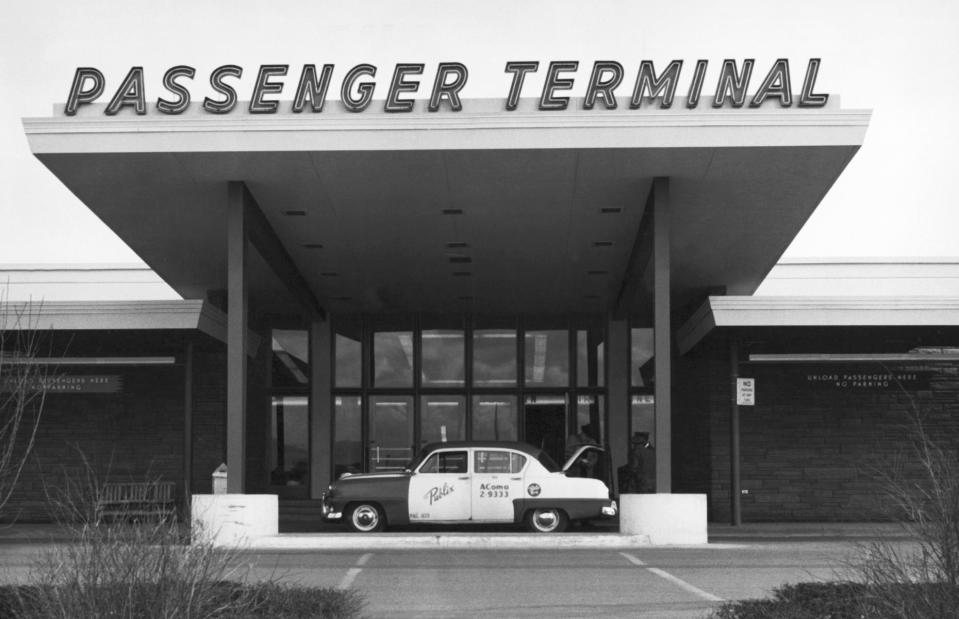
Underwood Archives/Getty Images
There’s something especially eerie about airports that were once so busy now lying empty and abandoned. Air travel has rapidly evolved down the decades, and some airports that were glamorous hubs in the golden age of travel were suddenly unable to cope with new technologies and rocketing passenger numbers. Others were replaced by bigger airports or were victims of circumstance, while some failed to take off at all.
Discover the most intriguing ex-airports around the world...
Croydon Airport, England, UK
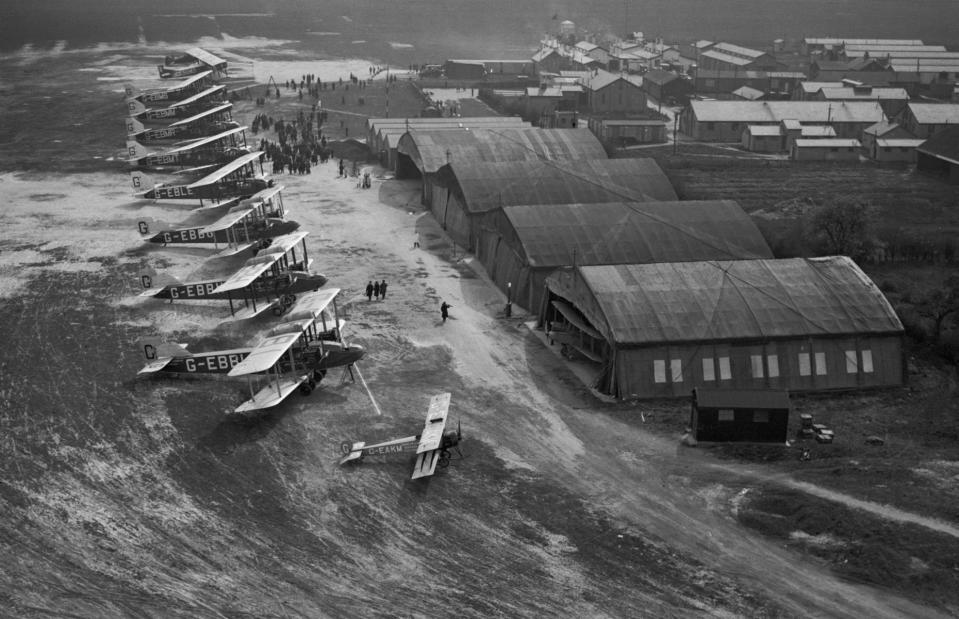
Central Press/Hulton Archive/Getty Images
Croydon Airport opened in 1920 as the UK’s first international airport, with Handley Page and Imperial Airways (later British Airways) transporting a jet-set crowd across Europe and to Asia and Australia on luxury craft with afternoon tea and cocktails. A roster of firsts includes the UK’s first customs, the first air traffic control and Amy Johnson’s groundbreaking solo flight from the UK to Australia in 1930. Passenger numbers rose from 2,000 in the first year to nearly 132,000 in 1936, and the airport handled the majority of the UK’s air mail and cargo.
Croydon Airport, England, UK
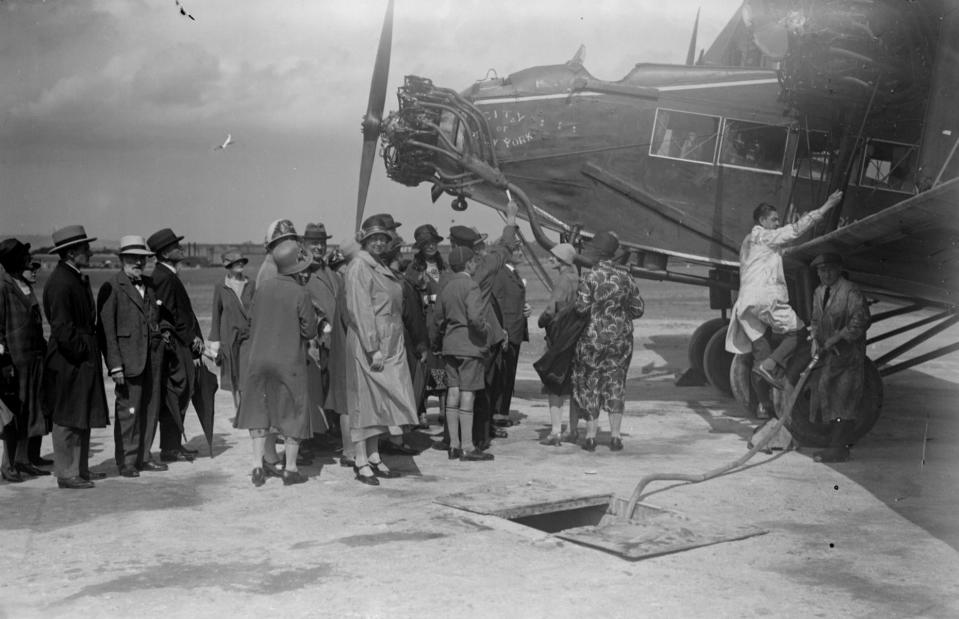
Fox Photos/Getty Images
A new terminal added in 1928 was the biggest in the world at the time but, after significant bomb damage during the Second World War, attempts to expand it proved problematic and Croydon Airport simply wasn’t big enough to keep up with growing air traffic. Heathrow opened in 1946 and became London’s primary airport, with Croydon eventually closing in 1959.
Croydon Airport, England, UK

In Pictures Ltd./Corbis via Getty Images
Its Neoclassical-style buildings have since housed commercial operations and business centres, while the airport’s main terminal remains a popular attraction thanks to its importance to aviation history. The iconic control tower, which was the world’s first, is the standout star, while a tiny, volunteer-run museum pays homage to the airport’s extraordinary past.
Montreal Mirabel Airport, Montreal, Canada
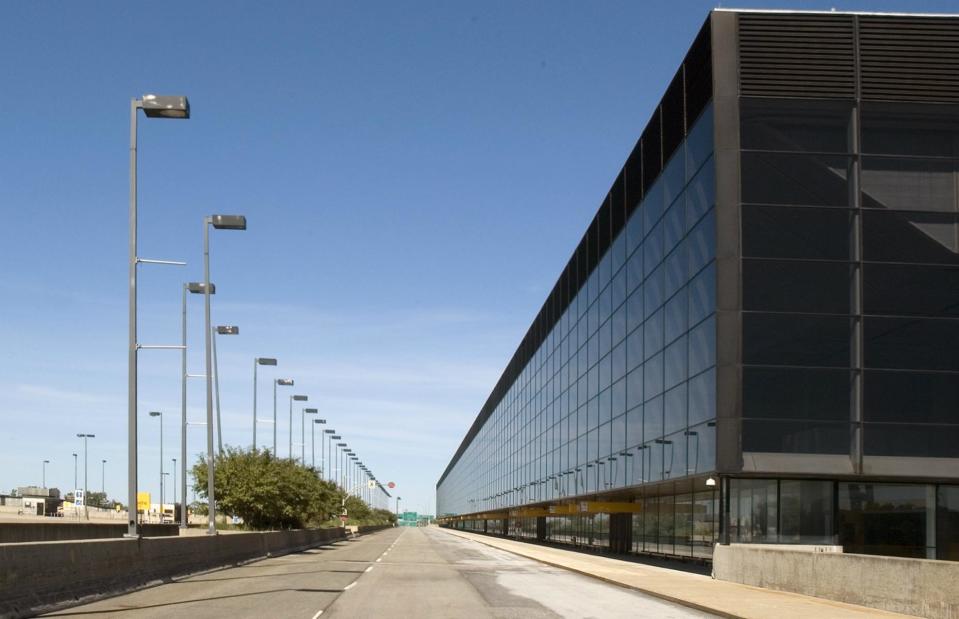
Yvan leduc/Wikimedia/CC BY SA 3.0
White elephants don’t come much bigger – or more expensive – than this stomping beast. Montreal Mirabel Airport opened in 1975 as part of the city’s preparations for hosting the Olympic Games the following year. It was set to replace Dorval Airport as the main route into the region and, as one of the world’s biggest airports, opened with loud fanfare and (initially) streams of passengers as people arrived for the games.
Montreal Mirabel Airport, Montreal, Canada
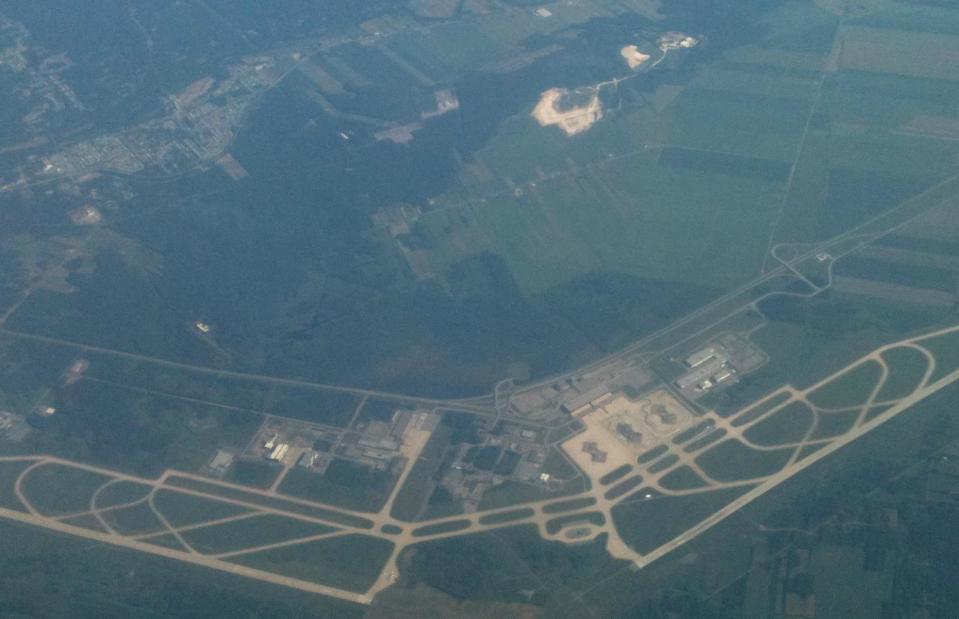
Russell Sutherland/Wikimedia Commons/CC0
But its location, far from downtown, quickly caused issues. The planned high-speed rail line failed to materialise, meaning journeys into the city took well over an hour. Domestic flights continued to land at Dorval, which caused more logistical nightmares for those with connecting flights. These infrastructure issues meant few were prepared to pay to fly from the out-of-town location, passenger numbers plummeted and Dorval (now Montreal-Trudeau International Airport) reopened to international routes in 1997.
Montreal Mirabel Airport, Montreal, Canada
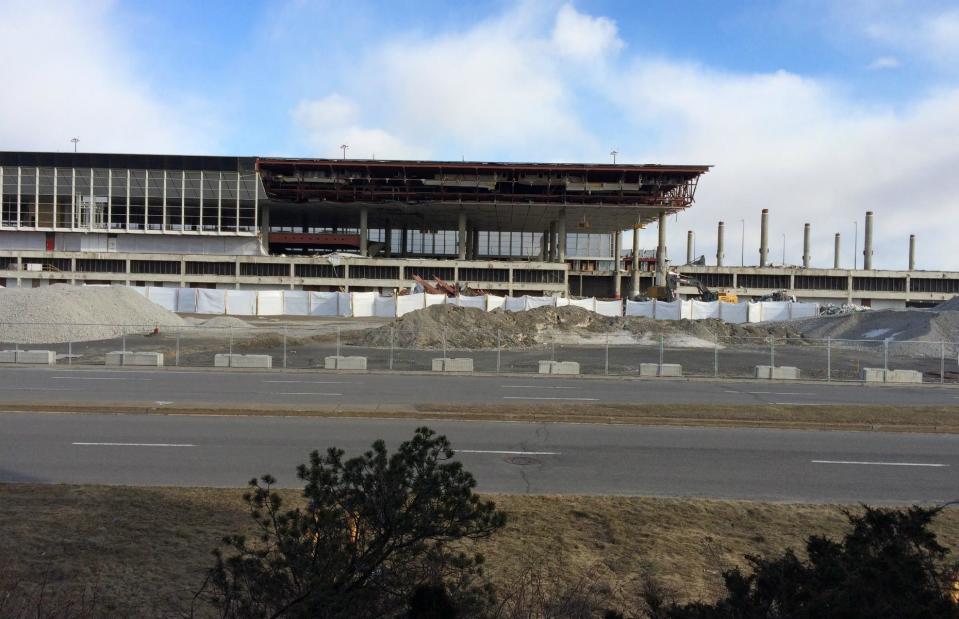
Dtmf1313/Wikimedia Commons/CC BY SA 4.0
The last passenger flight, an Air Transat route to London, departed in 2004 and the airport became a testing ground, cargo route and filming location – Tom Hanks’ 2004 movie The Terminal was shot here. Plans to turn it into a theme park were eventually abandoned just like the airport, and the passenger terminal was demolished in 2014.
Love this? Follow us on Facebook for travel inspiration and more
Tegel Airport, Berlin, Germany
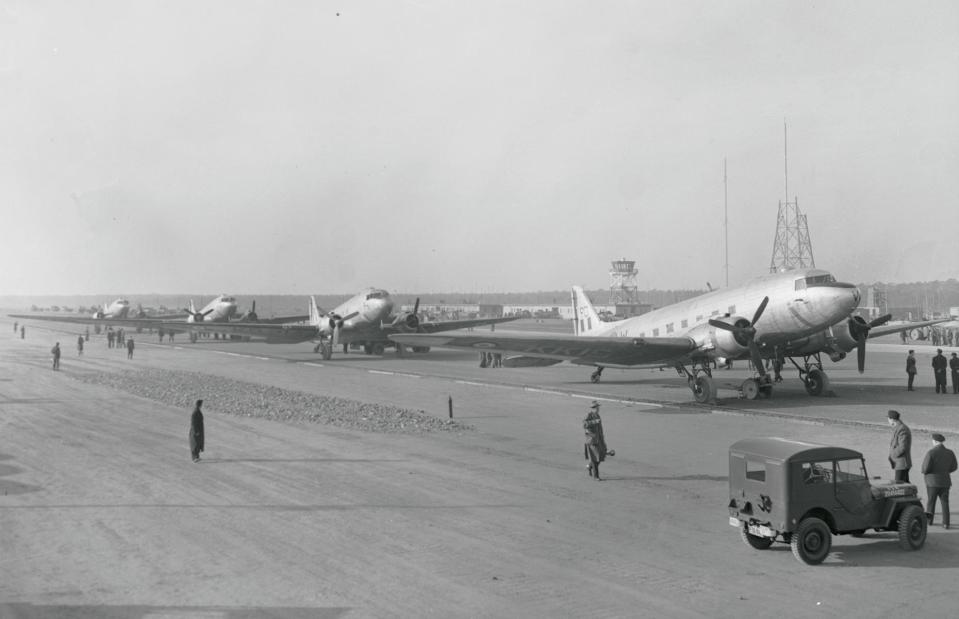
Bettmann/Getty Images
What became Berlin’s main international airport was built on land once destined for allotments. Until Soviet leader Joseph Stalin ordered a blockade in Berlin in June 1948, forcing Allied forces to act quickly. French authorities in the Tegel district ordered the speedy construction of an 8,202-foot (2,500m) runway that could be used to bring in emergency supplies, with the first plane touching base that November. It was part of the Berlin Airlift, bringing food and coal to the city and lifting children to safe zones until the blockade ended in May 1949.
Tegel Airport, Berlin, Germany
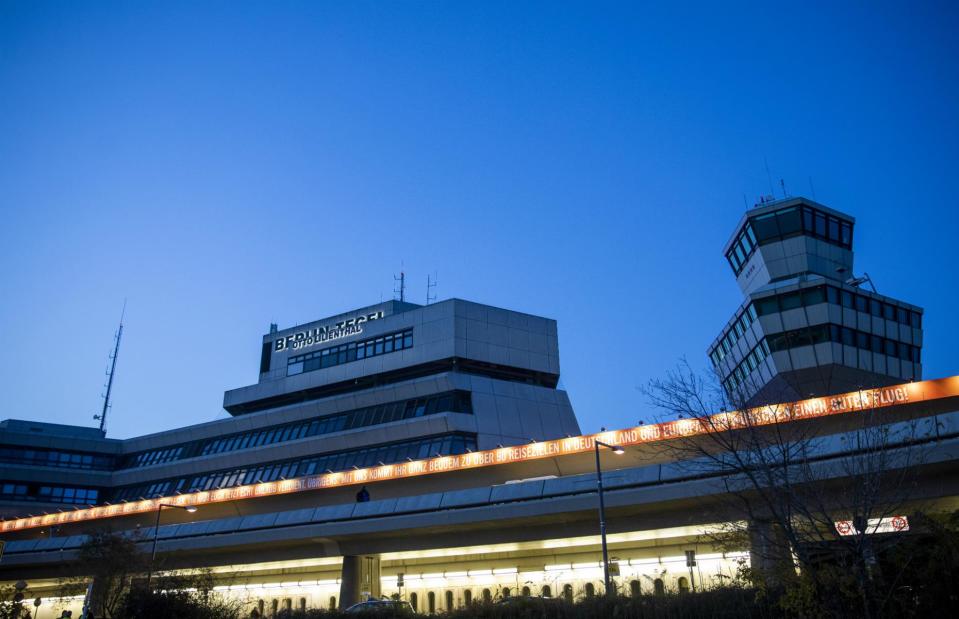
Maja Hitij/Getty Images
Tegel became the Berlin base of the French Air Force before becoming the city’s main commercial passenger airport in the late 1950s, with the runways at nearby Tempelhof airport proving too short. At its peak Tegel saw around 24 million annual passengers. But Tegel, with its hexagonal terminal building that opened in 1974, was never designed to handle such high traffic, and complaints of cramped conditions and poor facilities plagued the airport for decades.
Tegel Airport, Berlin, Germany
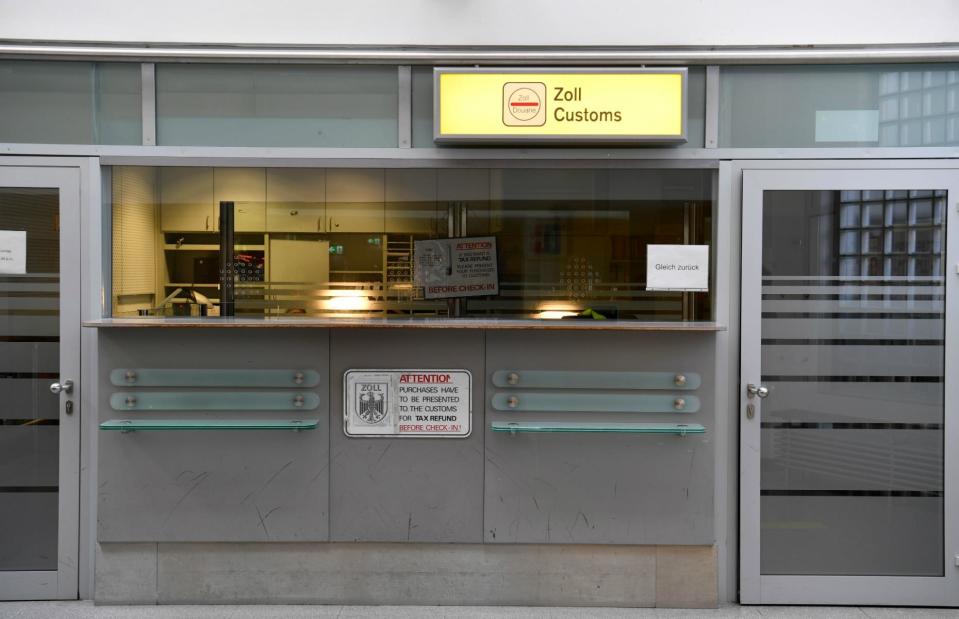
JOHN MACDOUGALL/AFP via Getty Images
It finally closed on 8 November 2020, replaced by Brandenburg Airport. The new airport was first planned when the Berlin Wall tumbled in 1989, though construction didn’t start until 2006 and a grand opening in 2012 was plagued by delays. It’s far slicker and shinier than Tegel, with high-tech features and a train station that connects it to the city centre. Tegel's A and B terminals are being turned into a technology park by the University of Applied Sciences Berlin, while the body of the airport is being developed into a giant eco-friendly residential district.
Tempelhof, Berlin, Germany
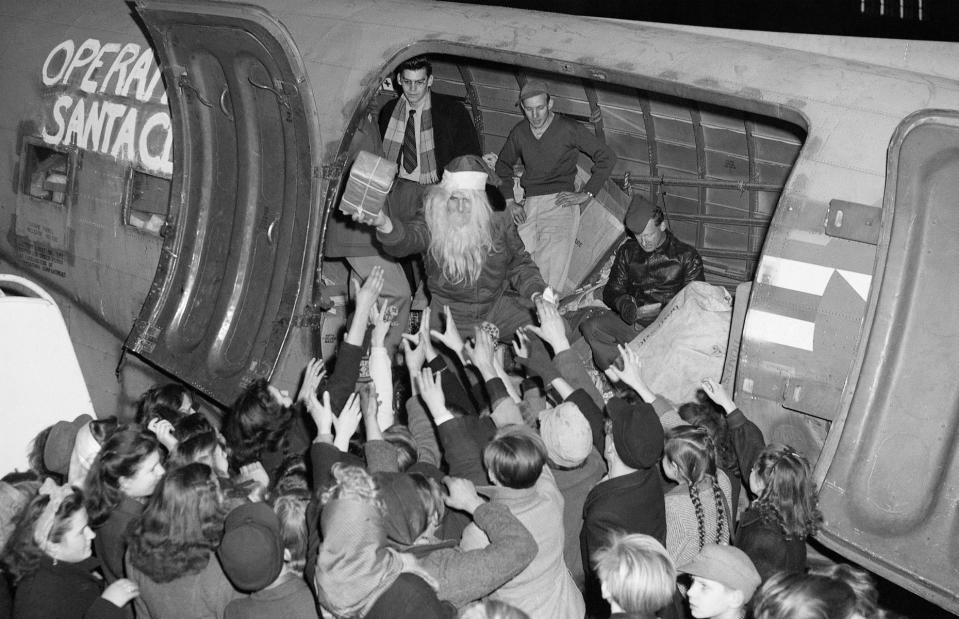
Bettmann/Getty Images
Tegel was constructed to help transport supplies during the Soviet blockade in 1948, but it's this pre-existing airport that remains most associated with the Berlin Airlift. Tempelhof Airport opened in 1927 and was significantly expanded under Nazi rule. It was briefly under Soviet jurisdiction before becoming the heart of the heroic humanitarian relief efforts to bring food, fuel and even Christmas gifts to people trapped in Berlin between 1948 and 1949.
Tempelhof, Berlin, Germany
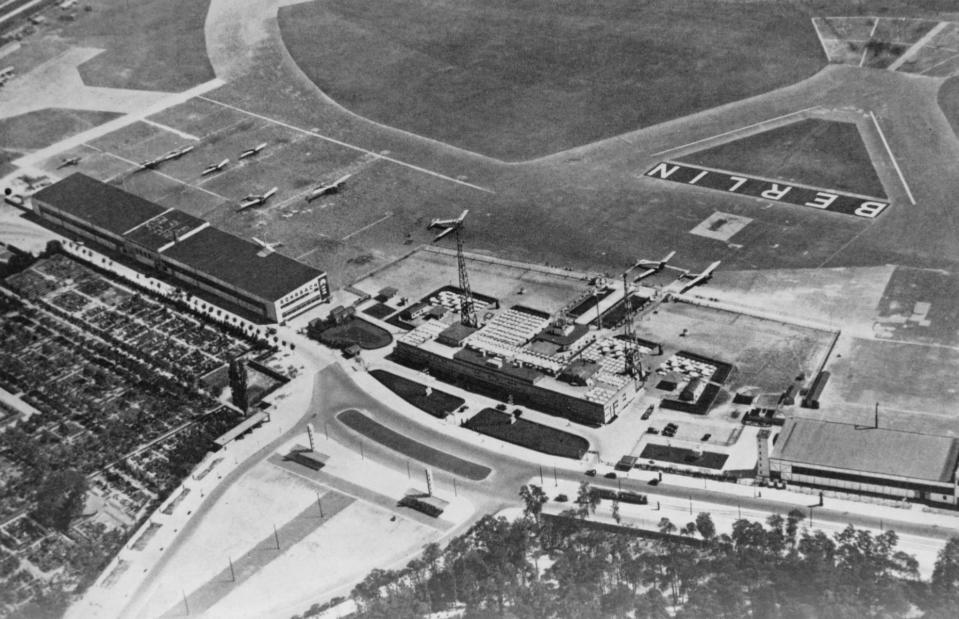
FPG/Getty Images
It became one of the city’s main commercial airports and was a hub for glamorous airline Pan Am in the 1950s. But it struggled to keep up with demand and, when Tegel’s new terminal opened in the 1970s, operations at Tempelhof were suspended. It reopened after the fall of the Berlin Wall but eventually closed in November 2008.
Tempelhof, Berlin, Germany
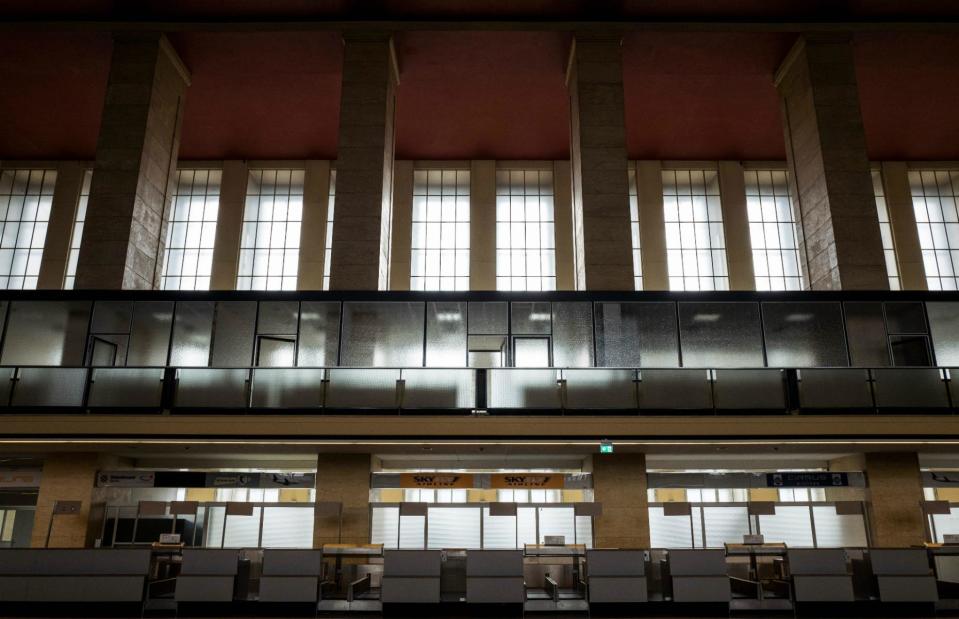
JOHN MACDOUGALL/AFP via Getty Images
Tempelhof now stands as an unusual and rather chequered historical monument. The Nazi-era terminal, with curved roof, remains intact with the pockmarks of bullet holes, while basements used as bomb shelters are adorned with whimsical paintings designed to distract children from what was happening outside. Its grounds have been reopened as a public park, Tempelhof Field, with tours of its buildings and events from fashion shows to raves. The enormous site is also a popular filming location for Second World War movies.
Robert Mueller Municipal Airport, Austin, Texas, USA
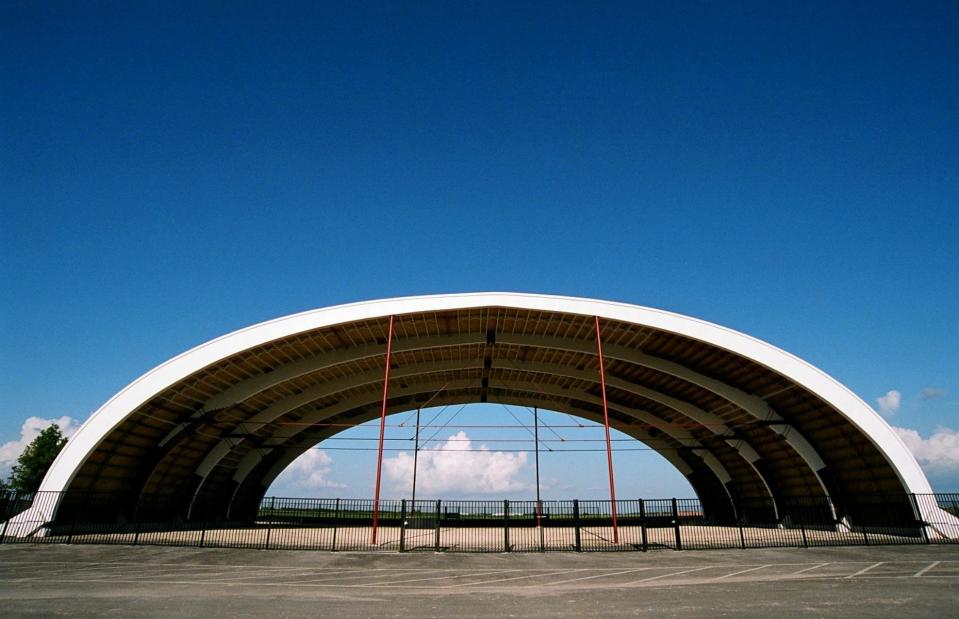
sean mason/Flickr/CC BY 2.0
Robert Mueller Municipal Airport opened in 1928 as Austin’s first airport for civilian air travel. City authorities asked the army based at Kelly Field in San Antonio to fly overhead and locate a suitable spot. The site, disused farmland a few miles from downtown, was chosen by pilot Claire Chennault, who later became famous with the 'Flying Tigers' of the Second World War. It was named after a city council member who died while in service, and its design – especially the steel-trussed control tower – won awards.
Robert Mueller Municipal Airport, Austin, Texas, USA
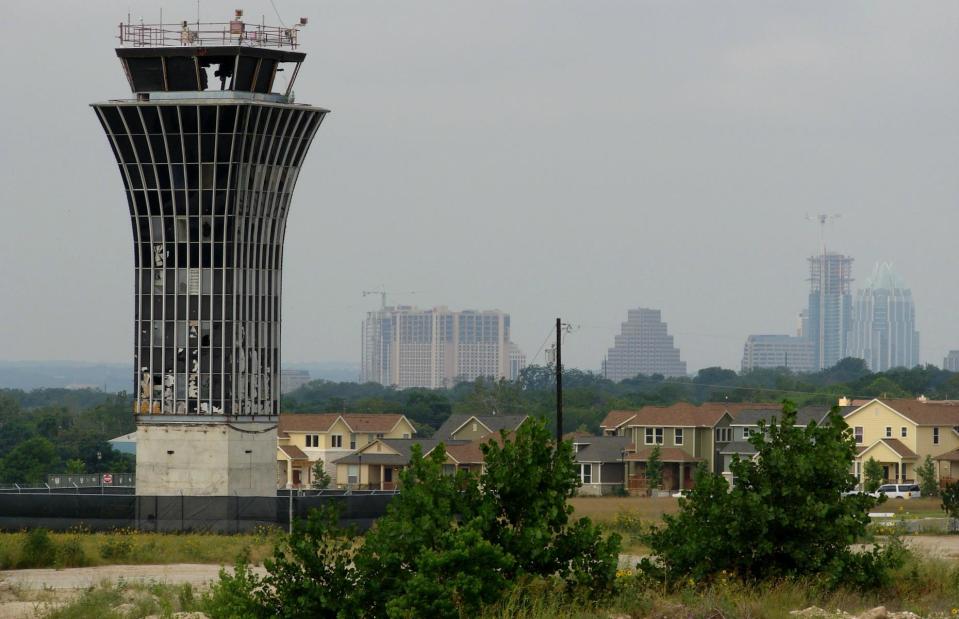
Matthew Rutledge/Flickr/CC BY 2.0
American and United Airlines both operated from Robert Mueller. As Austin’s popularity soared and the city became a tech hub, the airport was unable to meet demand. Rapid urban growth also meant that it ended up surrounded by new neighbourhoods and residential areas. It eventually closed in 1999, replaced by shiny new Austin Bergstrom International Airport – which, at more than 4,000 acres compared to the old airport’s 700, has a far bigger capacity.
Robert Mueller Municipal Airport, Austin, Texas, USA
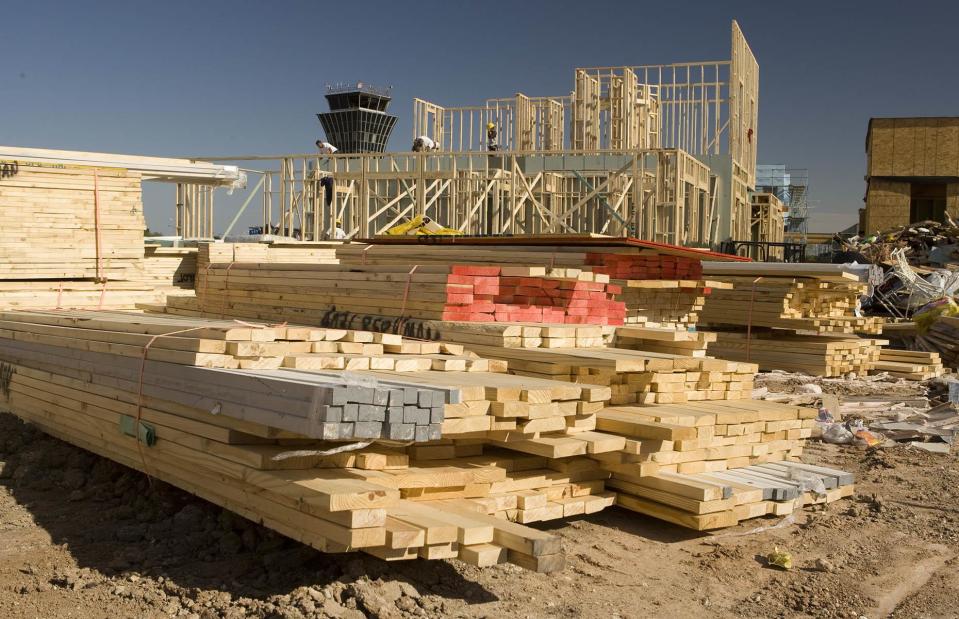
Robert Daemmrich Photography Inc/Corbis via Getty Images
The old airport remains part of the city’s fabric, though. In 2007, construction began on Mueller, a huge mixed-use 'urban village' and sustainable, self-contained community on the site of the airport, with green spaces, homes, office spaces, shops and restaurants. The old control tower remains as a landmark in the new neighbourhood, while the old hangar is at the heart of Lake Park.
Yasser Arafat International Airport, Gaza
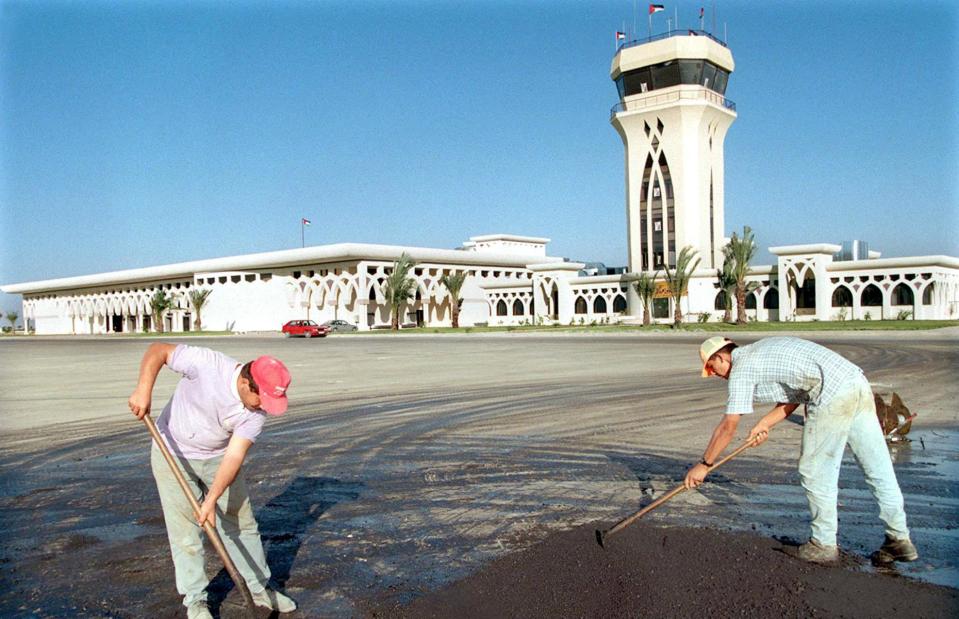
FAYEZ NURELDINE/AFP via Getty Images
The then-US president Bill Clinton attended the opening ceremony of Yasser Arafat International Airport, also known as Gaza International Airport, when it officially opened in late 1998. It was to be a major international airport serving the city of Rafah in the Gaza Strip and the surrounding areas, and was completed with international funding. For the first few years it saw around 700,000 annual passengers.
Yasser Arafat International Airport, Gaza
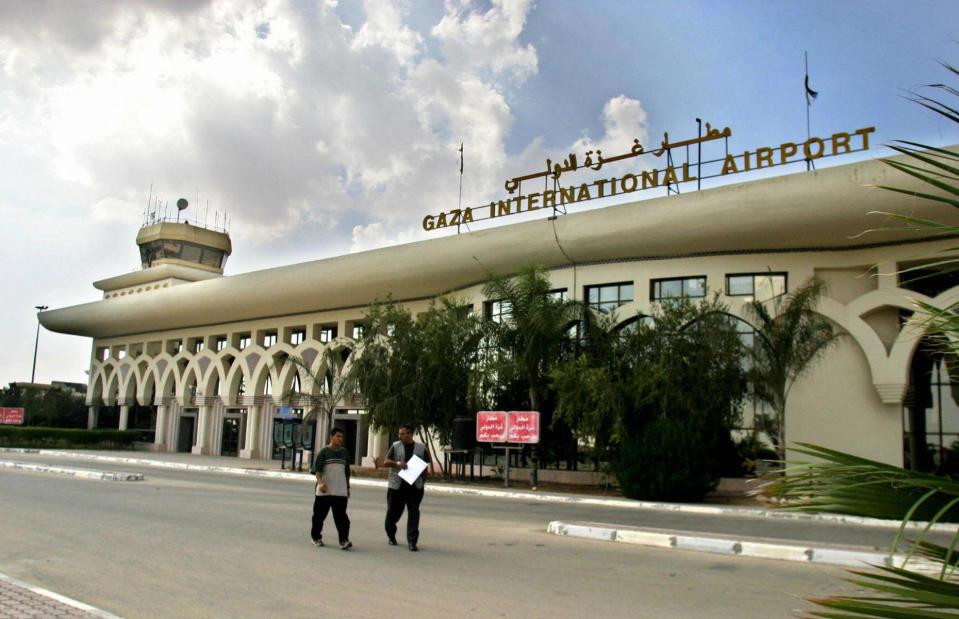
SAID KHATIB/AFP via Getty Images
But its operation was short-lived. The £63.8 million ($86m) airport, which was named in honour of Palestinian leader Yasser Arafat, was targeted by an Israeli bombing campaign during the al-Aqsa Intifada or Second Intifada, a Palestinian uprising against Israel in 2000. The air traffic control tower, runway and the terminal building were severely damaged. Shortly afterwards the remains of the airport were pretty much flattened by bulldozers.
Yasser Arafat International Airport, Gaza
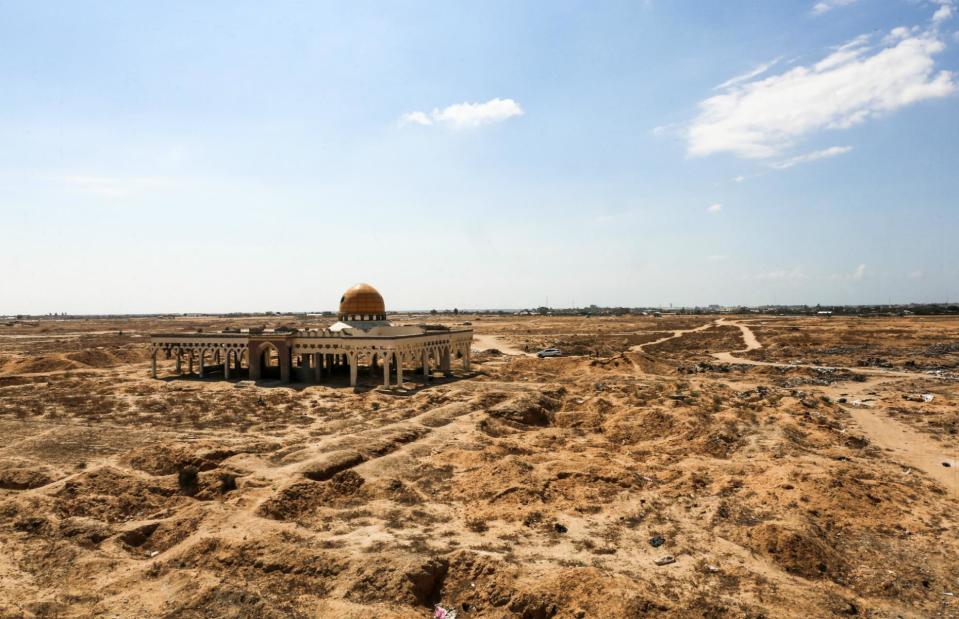
SAID KHATIB/AFP via Getty Images
By late 2002 the airport was destroyed, and what was once hailed as a symbol of Palestinian sovereignty as well as a beacon of hope for a peaceful resolution to the Israel-Palestine conflict, lay abandoned and in ruins. The gold-topped VIP lounge and crumbling porticoes still sit there in the desert, but over the years proposals to rebuild the hub have been vetoed by Israeli authorities.
Nicosia International Airport, Cyprus
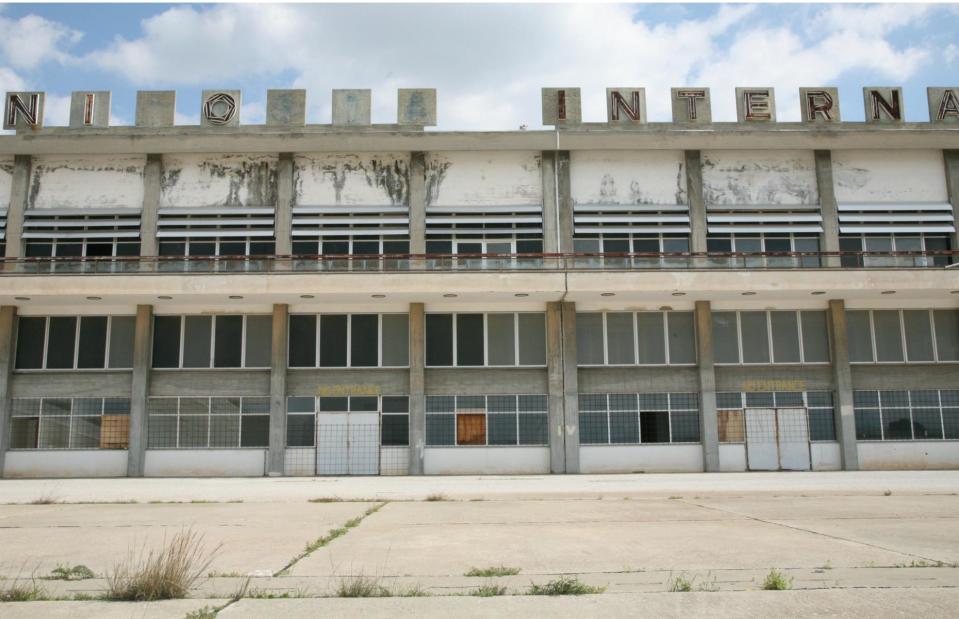
JIHAN AMMAR/AFP via Getty Images
Nicosia International was built in the 1930s and was used as a military airfield before becoming the island’s primary commercial airport in 1968, bringing in around 800,000 passengers a year. The state-of-the-art facility, home to shops, restaurants, bars and luxury lounges, was a hub for domestic airline Cyprus Airways.
Nicosia International Airport, Cyprus
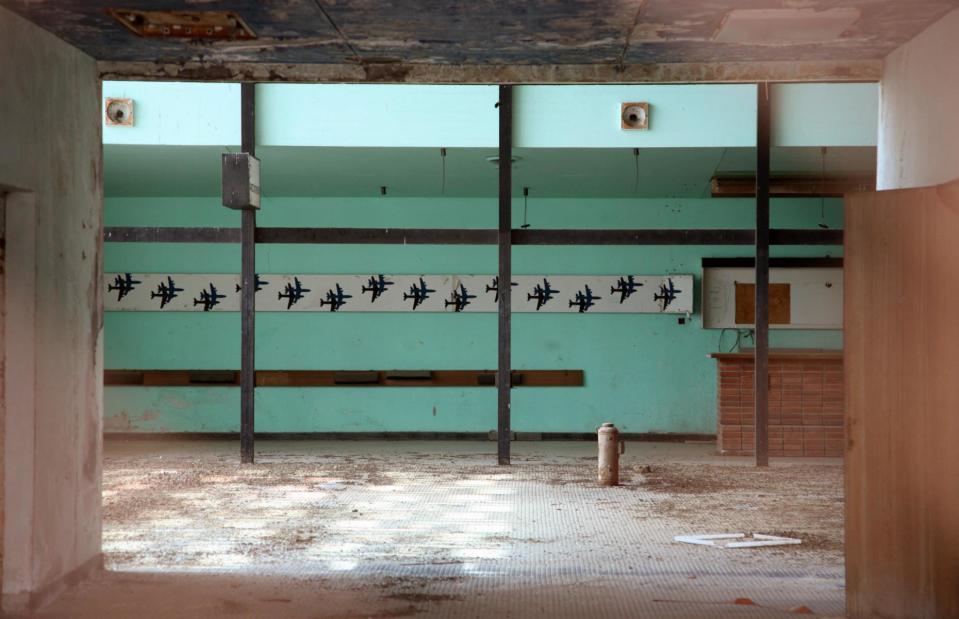
JIHAN AMMAR/AFP via Getty Images
But it was doomed to be trapped in a 1970s time warp, as Nicosia found itself literally in the middle of divisions and tensions between Greek and Turkish Cypriots. Turkish forces invaded the island in July 1974 and the airport was damaged during the fighting. It was eventually enveloped by a demilitarised zone and designated a UN-controlled buffer zone once hostilities ceased.
Nicosia International Airport, Cyprus
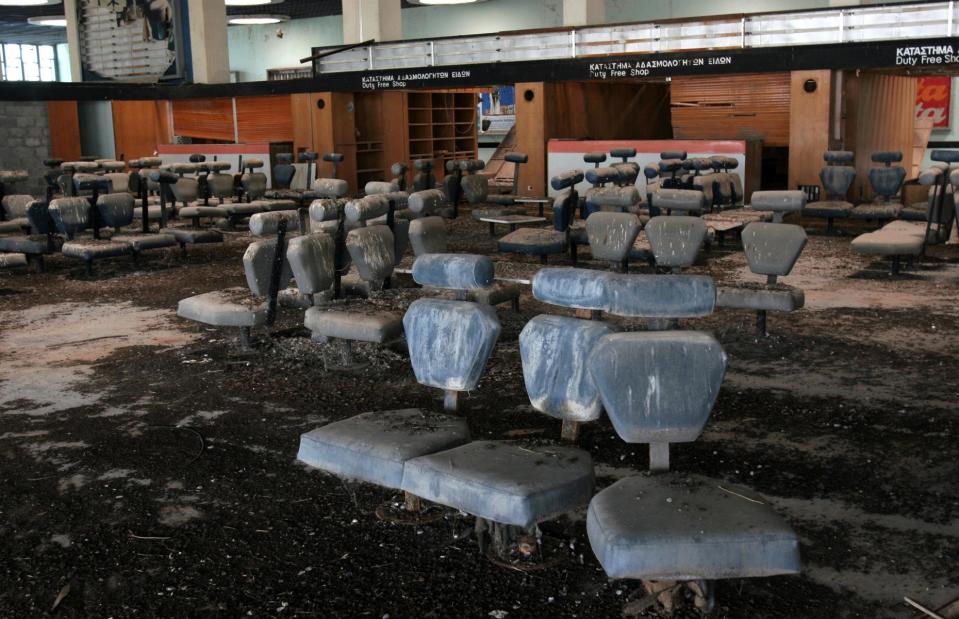
MONA BOSHNAQ/AFP via Getty Images
Stuck in this no-man’s land, the airport has been closed to the public ever since and is instead used as a headquarters for the UN peacekeeping force in Cyprus. The neglected terminals and lounges have fallen into decay yet also remain eerily unchanged, with leather-upholstered seats, original signage and even rusting jets on the runway. A Cyprus Peace Concert was held here in September 2010 to mark the International Day of Peace, though the airport’s long-term future remains uncertain.
Ellinikon International Airport, Greece
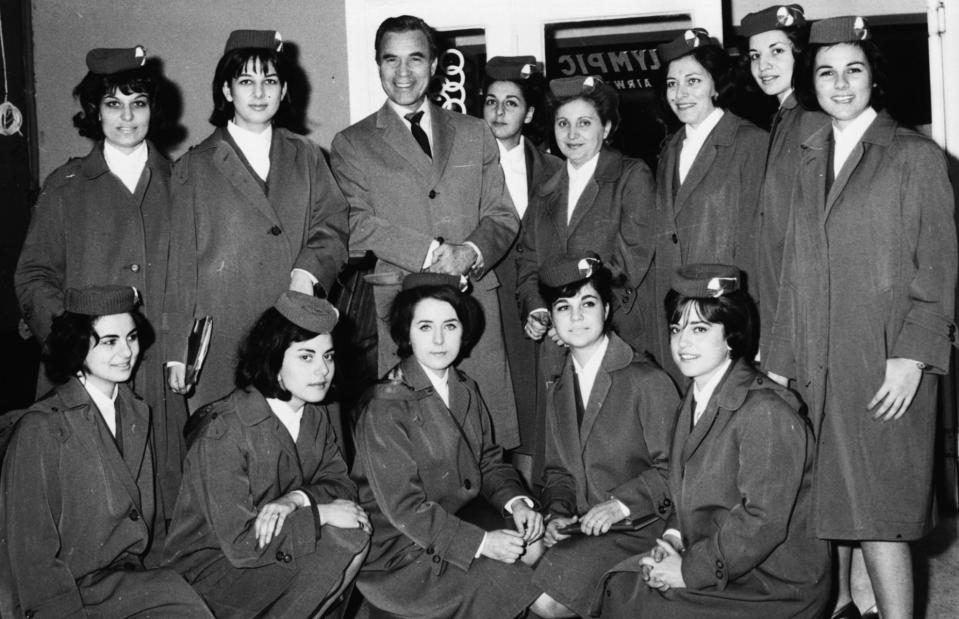
Keystone/Hulton Archive/Getty Images
Ellinikon – also known as Hellinikon – was originally built in 1938 as an airfield and was taken over by the Nazis until the end of the Second World War, when it became an operational base for the US Air Force. It was also used by diplomats, stars and sportsmen – including racing driver Porfirio Rubirosa, pictured with Olympic Airways staff in 1965. It officially became a commercial hub in the 1990s and was able to take up to 11 million passengers annually.
Ellinikon International Airport, Greece
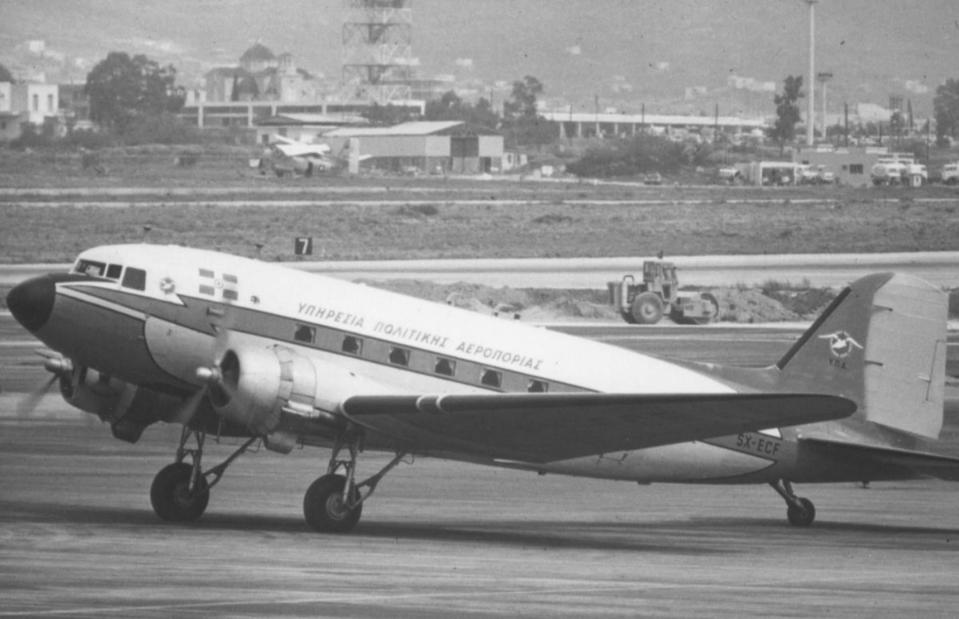
RuthAS/Wikimedia Commons/CC BY 3.0
It closed in 2001 to be replaced by the bigger, more high-tech Athens International Airport (or Eleftherios Venizelos). It still had a part to play in the city’s history, though, with parts of it used to host sporting events during the 2004 Olympic Games. The northwestern section of the site was used for field hockey and baseball, while one of the hangars was repurposed for fencing and basketball.
Ellinikon International Airport, Greece
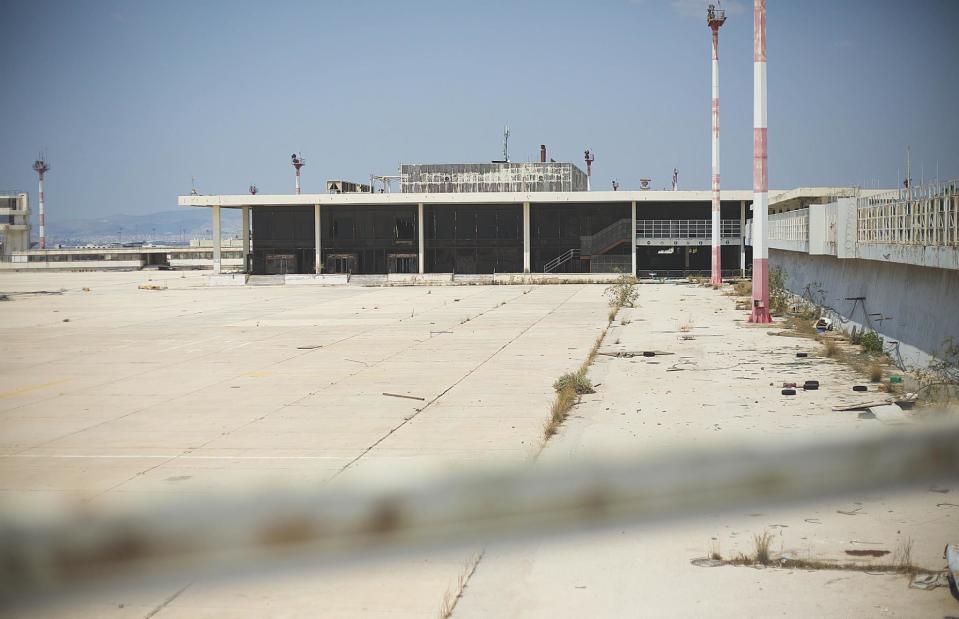
Dennis David Auger/Wikimedia Commons/CC BY SA 4.0
The airport has also been used as a makeshift camp for migrants, while plans to convert it into a municipal park were shelved due to the Greek debt crisis. There are now plans afoot for an enormous mixed-use urban development project named The Ellinikon, which will apparently boast an office tower, a 200-room hotel, a public beach, 6,200 acres of urban living, 31 miles (50km) of scenic walkways and cycle tracks and 6.4 million square feet (600,000sqm) of parkland.
Discover abandoned airports from around the world
Floyd Bennett Field, New York, USA
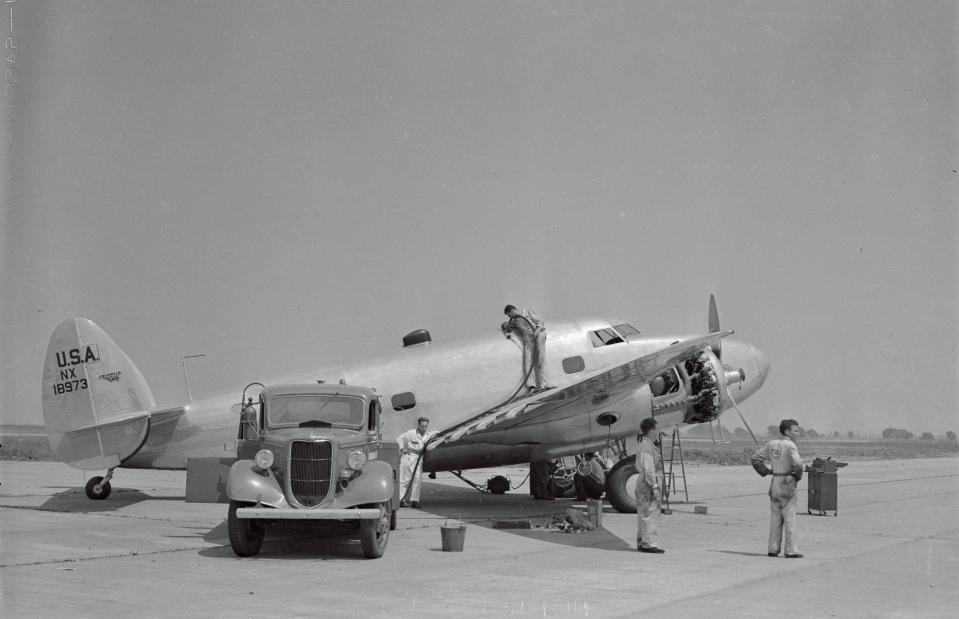
Bettmann/Getty Images
New York’s first municipal airport was a glamorous aviation centre, serving both civilian travellers and witnessing some of the most important moments in the history of human flight. It was opened in May 1931 after Charles Lindbergh’s 1927 New York to Paris flight, which actually landed outside city limits. This airport, on Barren Island, rectified that oversight and hosted commercial flights and private jets, including Howard Hughes’ plane (pictured).
Floyd Bennett Field, New York, USA
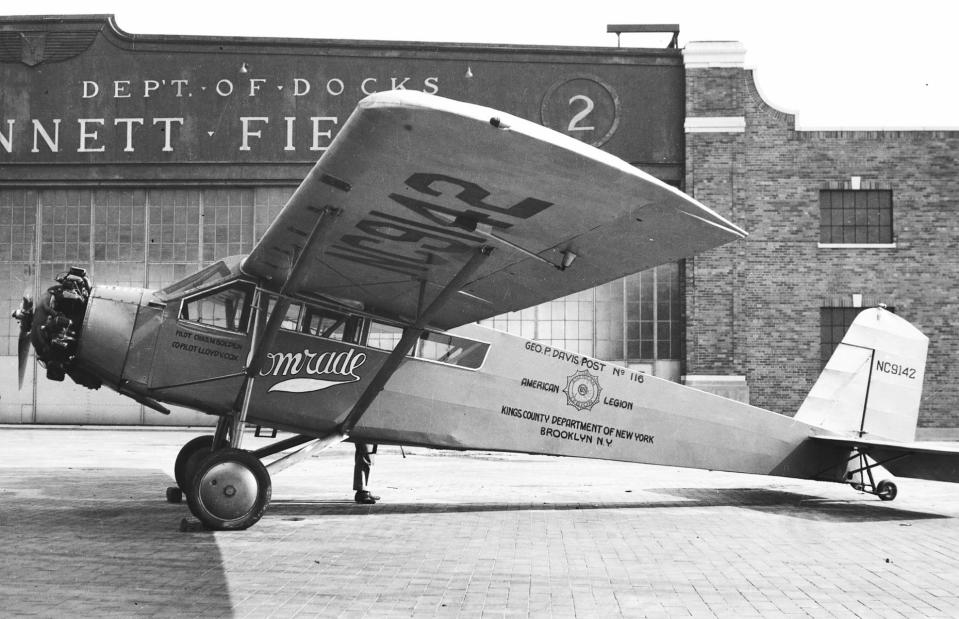
Irving Haberman/IH Images/Getty Images
The airport was a regular stop for record-breaking aviator Amelia Earhart and hosted air spectacles and races before it was sold to the US navy during the Second World War. A new municipal airport, LaGuardia, opened in 1939 and Floyd Bennett Field was designated as a naval air station in 1946, which it remained until being deactivated in 1971.
Floyd Bennett Field, New York, USA
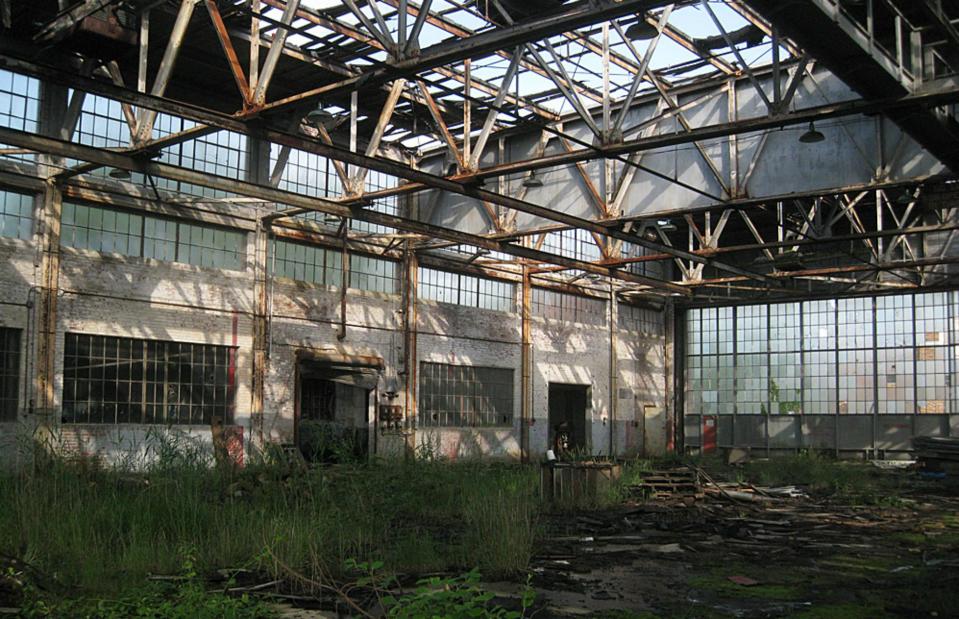
H.L.I.T./Flickr/CC BY 2.0
It hasn’t been completely abandoned, however. Floyd Bennett Field is now a recreational area with salt marshes, grassy stretches, mudflats and a marina, operated by the National Park Service. The original airfield is incorporated into the park, which hits the shore of Jamaica Bay in Brooklyn’s Marine Park neighbourhood, while the control tower and terminal have been converted into a visitor centre with aviation memorabilia on display.
Ciudad Real Central Airport, Spain
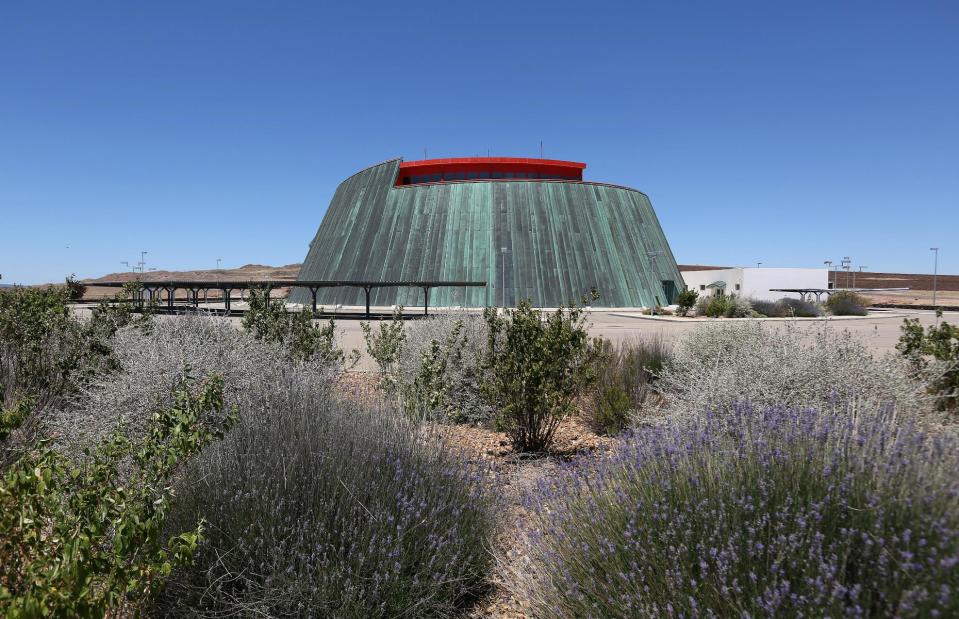
Oli Scarff/Getty Images
Ciudad Real Central Airport opened in 2008, intended to be Spain’s first private airport with the capacity to serve 10 million travellers each year. Also known as Central Airport CR, Don Quijote Airport and South Madrid Airport, it cost close to £1 billion ($1.3bn) to build, with a striking visitor centre, facilities to accommodate all models of commercial aircraft and a single 2.5-mile (4km) runway. It was designed to handle overflow from Madrid’s Barajas Airport and serve passengers travelling to Madrid and the Andalucían coast.
Ciudad Real Central Airport, Spain
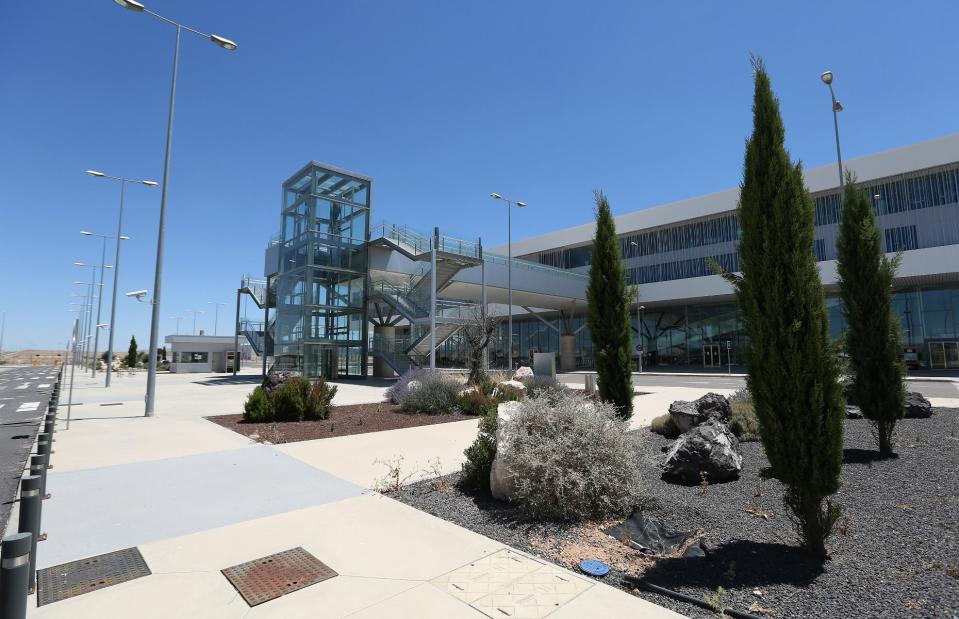
Oli Scarff/Getty Images
But lack of demand meant it barely got off the ground. Its construction coincided with Spain’s economic crisis and the resulting recession, and its out-of-town location didn’t help. It failed to attract enough operators to be profitable and Spain-based Vueling Airlines withdrew its fleet in 2011. The airport ceased to operate the following summer due to bankruptcy.
Ciudad Real Central Airport, Spain
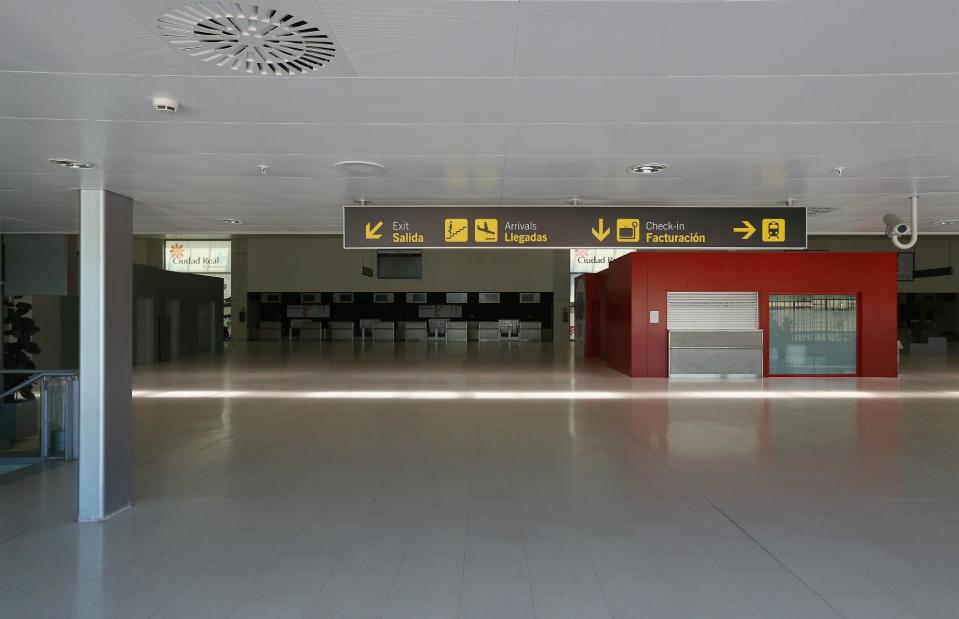
Oli Scarff/Getty Images
The ghost airport remains mothballed and its structures stand in the middle of nowhere like a herd of white elephants. They include a huge car park and a partially completed walkway connecting the airport to a train station that was supposed to be part of the Madrid to Seville high-speed rail line, which itself was never completed. It was bought in 2016 by CR International Airport SL with plans to revive it as a commercial airport, but it spent most of the pandemic as a plane storage facility.
Stapleton International Airport, Denver, Colorado, USA
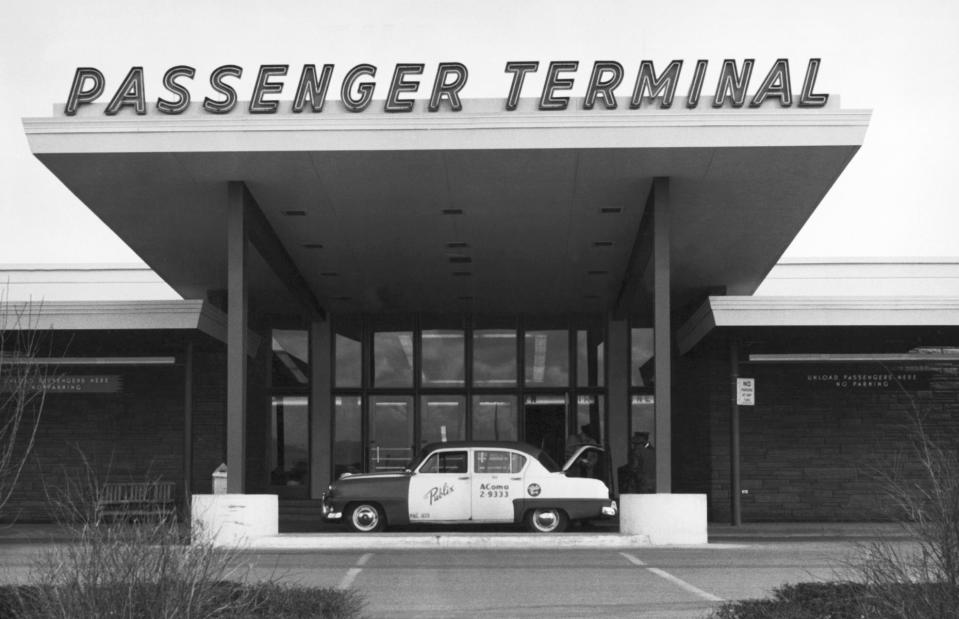
Underwood Archives/Getty Images
Stapleton was Denver’s main airport between 1929 and 1995. The airport was one of the busiest in the world, serving more than 1.5 million passengers annually by 1960, and became a hub for airlines including Continental, which also no longer exists. Stapleton boasted an impressive six runways, five terminals and around 1,200 employees. Even aviator Amelia Earhart swung by here, in June 1931.
Stapleton International Airport, Denver, Colorado, USA
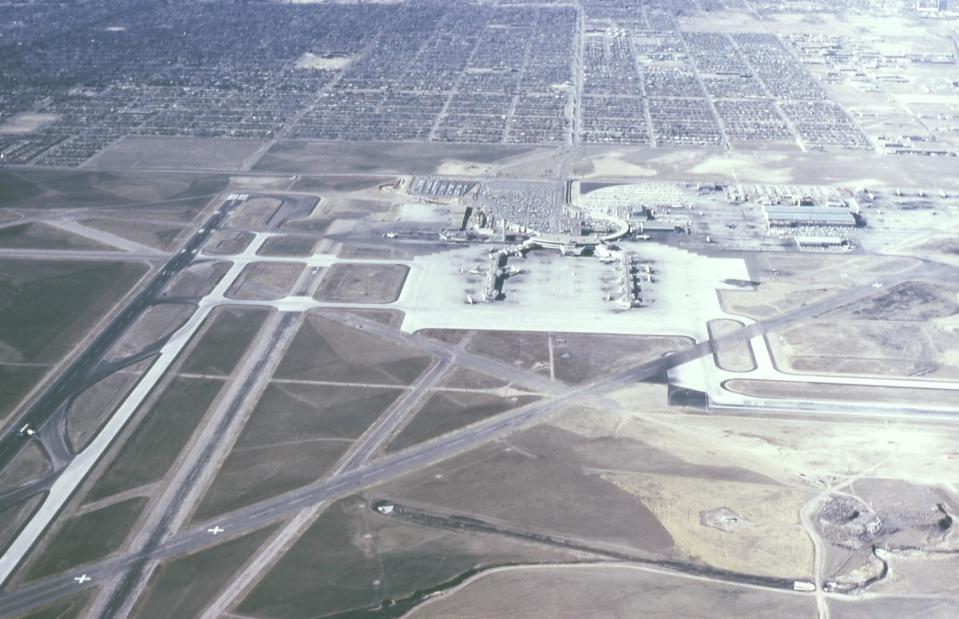
Robert J. Boser/Wikimedia Commons/CC BY SA 3.0
Yet it still wasn’t quite big enough to service the Mile High City's huge visitor numbers. As the demand for air traffic increased, Stapleton wasn’t able to keep up and suffered due to its runways being too close together, which meant that air traffic control had to stagger take-offs and landings. It ceased operation in 1995 and planes were routed to Denver International Airport, whose tent-like peaks are surrounded by mountains.
Stapleton International Airport, Denver, Colorado, USA
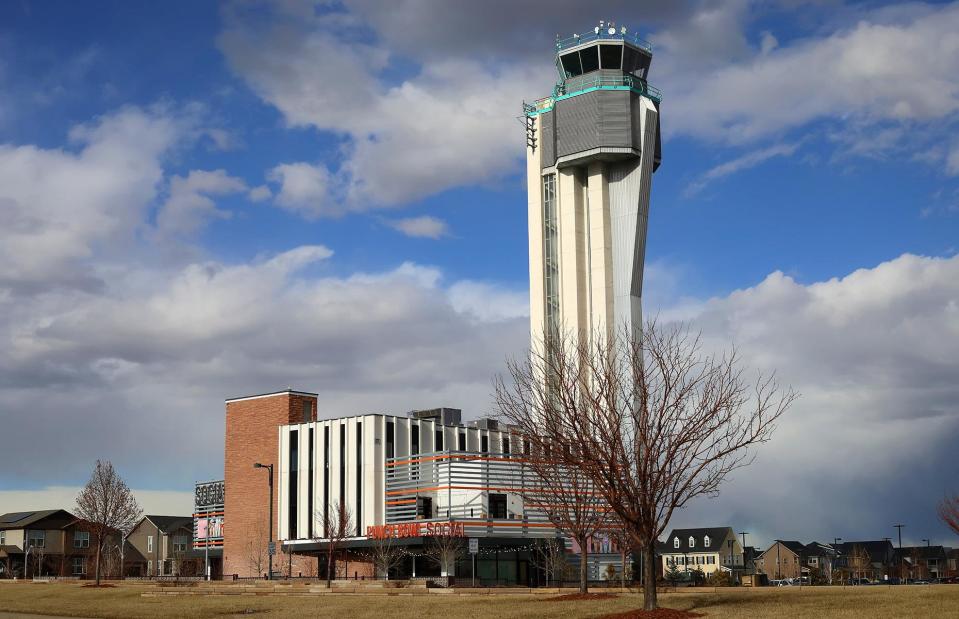
photo-denver/Shutterstock
A storm in 1997 damaged many of the old airport’s buildings and left holes in the rooftops, so most were torn down. The old air traffic control tower still remains, and was turned into a restaurant, bar and bowling alley called the Punch Bowl Social, which closed permanently in 2020. In 2022 brewing company FlyteCo opened a brewpub on the ground floor, and in 2023 they started offering guided tours of the tower.
Kai Tak International, Hong Kong
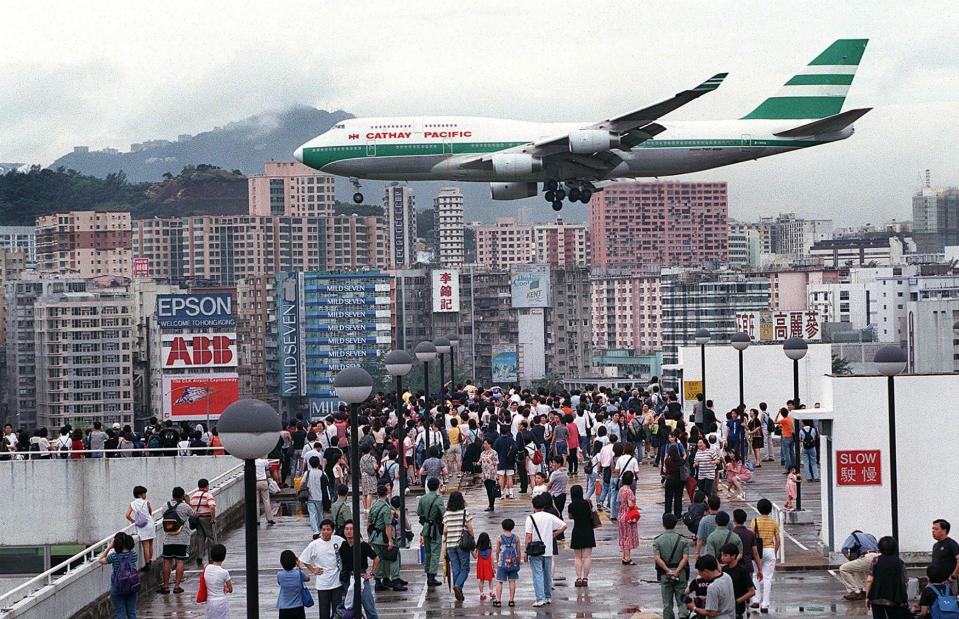
FREDERIC J. BROWN/AFP via Getty Images
Coming in for landing at this airport was a little like being on a roller coaster – a roller coaster that rattled between skyscrapers and apartment blocks before touching down on a runway surrounded by water. Kai Tak opened in 1925 as Hong Kong’s main airport and it could hardly have been more central, right in the heart of Kowloon. At its height around 30 million people passed through the airport each year.
Kai Tak International, Hong Kong
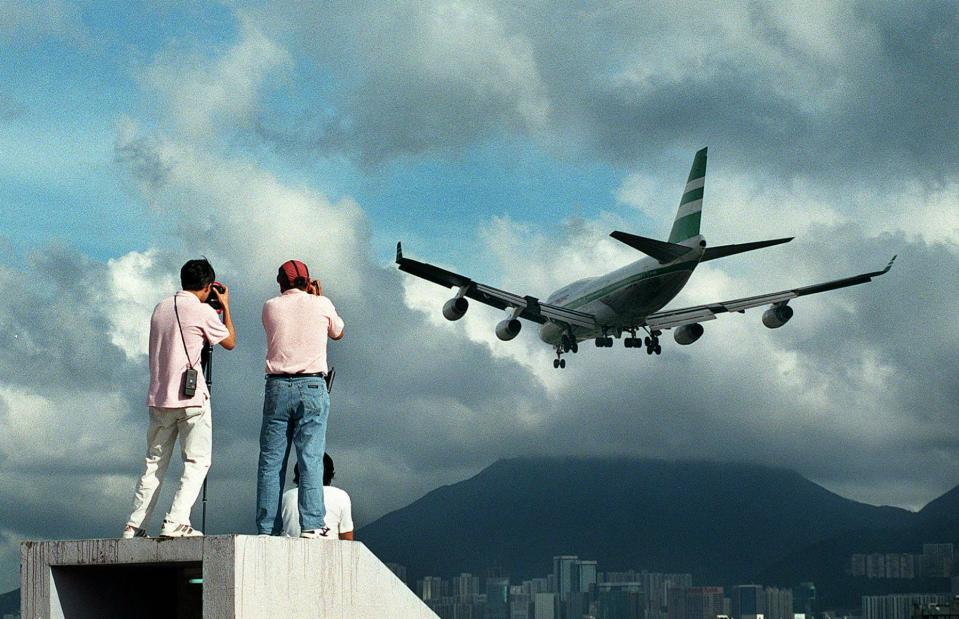
FREDERIC J. BROWN/AFP via Getty Images
Its spectacular location and high footfall eventually led to the airport’s closure. With just one runway adjacent to Victoria Harbour and a lack of infrastructure, it struggled with overcrowding, while pollution was also a problem for residents. Surrounding hills and often-windy conditions led to several accidents, including in 1993 when a China Airlines Boeing 747 overshot the runway during a typhoon and crashed into the harbour. The airport finally closed in 1998 – replaced by the much larger Chek Lap Kok airport (also known simply as Hong Kong International).
Kai Tak International, Hong Kong
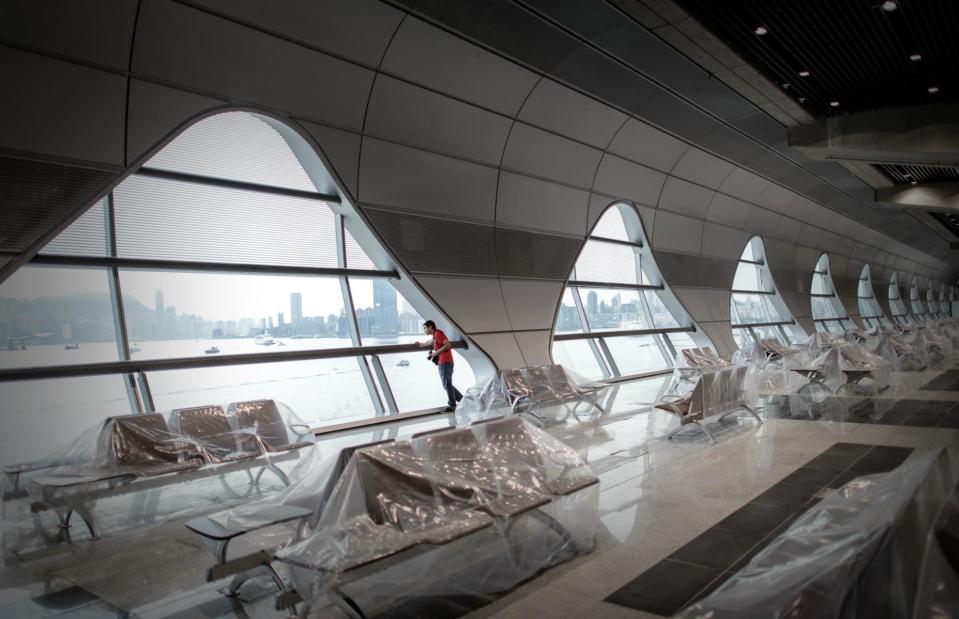
PHILIPPE LOPEZ/AFP via Getty Images
Crowds turned out to gawp at and photograph the planes in the days before the airport closed, standing on rooftops and bridges to watch the craft skim close to the buildings one last time. The old airport was transformed into a cruise terminal that opened in 2013, with the aim of transforming the city into the region’s biggest cruise hub.
WH Bramble Airport, Montserrat
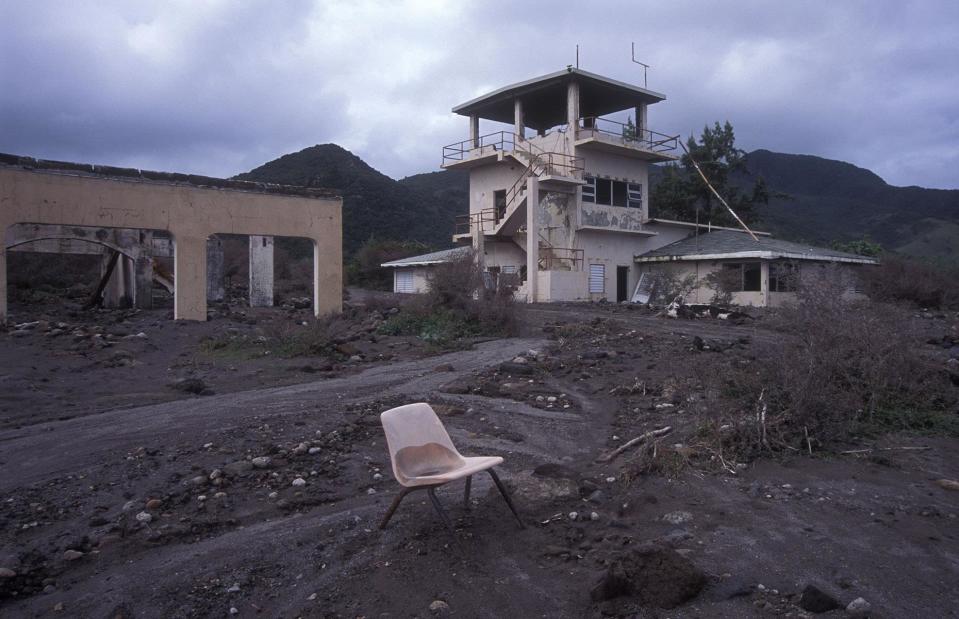
Christopher Pillitz/Getty Images
WH Bramble Airport, formerly the only international airport serving the Caribbean island of Montserrat, is quite unlike the other airports on this list. While most ex-airports fall victim to commercial pressures, this hub was wiped off the face of the island by the eruption of the Soufriere Hills volcano in 1997 – the same eruption that devastated half the island and reduced its capital city Plymouth to a ghost town buried by ash. This image shows the former terminal building, the surrounding soil still mixed with black volcanic residue.
WH Bramble Airport, Montserrat
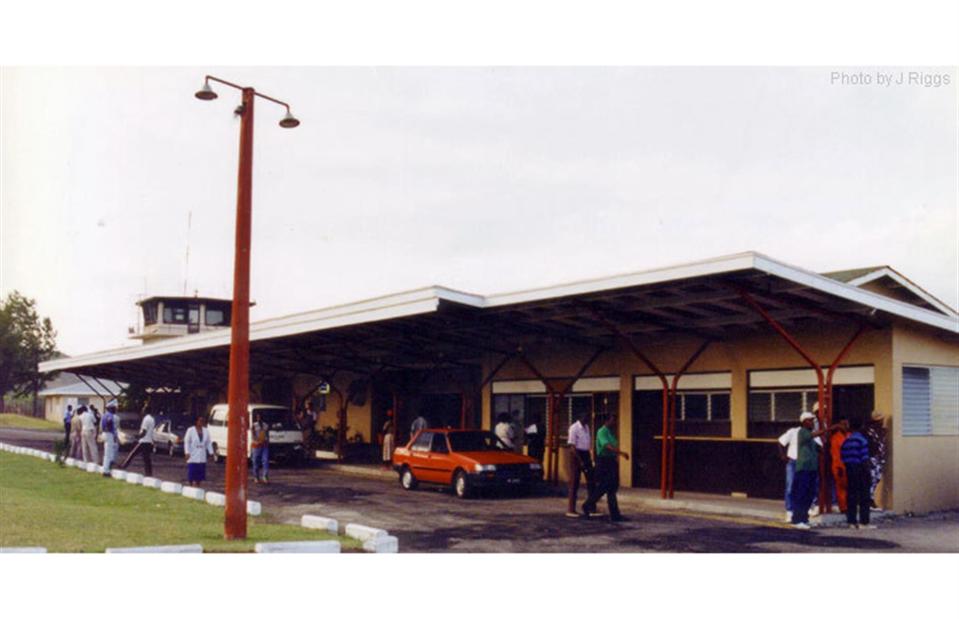
J. Riggs/Wikimedia Commons/CC0
Montserrat is a British Overseas Territory that, before the disaster, had a stable economy based on agriculture and tourism. WH Bramble's tiny terminal welcomed a steady stream of sun-seekers to the island's beaches and verdant interior, but in the mid-1990s the airport found itself evacuating much of Montserrat's population after a sudden increase in volcanic activity, many of them never to return. Before the eruption the island had 11,000 residents – today its population is barely 5,000. This image shows the terminal building in use in the early 1990s, just a few years before pyroclastic flow closed it for good.
WH Bramble Airport, Montserrat
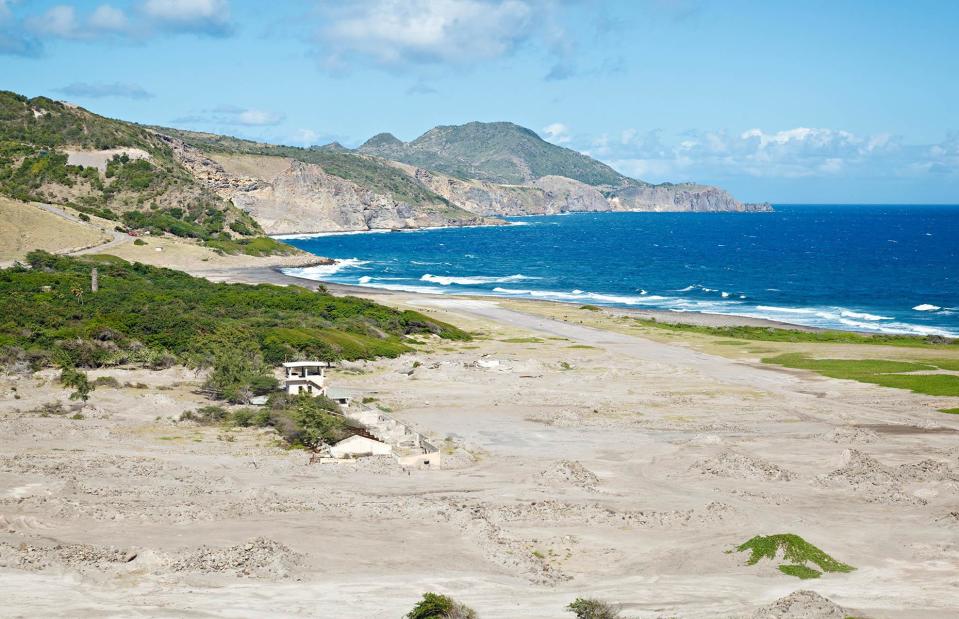
IndustryAndTravel/Shutterstock
An exclusion zone remains in place across the island's entire south, and a small new airport, John A Osborne Airport, opened in 2005 to handle international arrivals. This new hub now has WH Bramble's airport code (MNI), and the old airport has been abandoned to the elements. In the background of this aerial photo you can still make out the old airport's runway, which once stretched along the shore a stone's throw from the beach.


